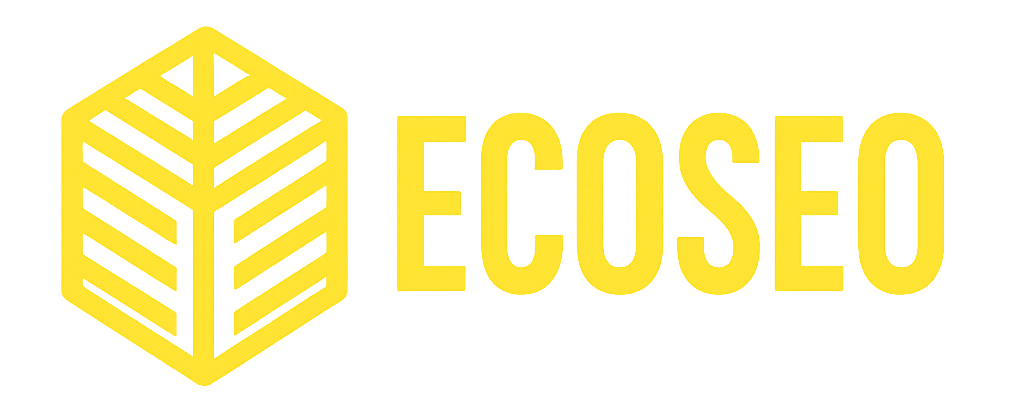Guess what? Your site is live, your content is polished and your brand is ready to shine—but where’s the traffic? Relying on paid ads or social media trends might give you quick wins but they fade fast. SEO is a smarter way, driving organic traffic that gets stronger over time.
Unlike short term tactics, SEO builds a foundation for long term visibility, credibility and revenue. In this article we’ll look at the long term benefits of SEO, backed up by data and real world examples and provide a clear roadmap to lasting organic success.
Whether you’re a business owner or marketer this guide written with input from top SEO experts will help you invest in SEO for lasting impact.

What Is SEO and Why Focus on Long-Term Benefits?
SEO is the process of optimising your website to rank higher on search engine results pages (SERPs) like Google, getting organic (non-paid) traffic. It includes on-page elements (content, keywords), off-page factors (backlinks), and technical SEO (site speed, mobile-friendliness). While paid ads give instant visibility, SEO’s long-term approach compounds over time, delivering scalable, cost-effective results.
Why prioritise long-term SEO? Unlike paid campaigns that stop when the budget runs out, SEO creates assets—optimised content, authority, user trust—that can perform for years.
A report found that 68% of all trackable website traffic is sourced from organic traffic and Paid Search, vastly exceeding all other channels, including Display and Social Media. Collaborating with digital marketing professionals can maximize these benefits, ensuring steady growth without dependence on short-lived tactics.
Expert Insight: “SEO is a marathon, not a sprint. It’s about creating value that compounds over years, not chasing overnight wins,” says Neil Patel, co-founder of NP Digital.
Core Long-Term Benefits of SEO
SEO’s impact goes beyond rankings. Here are fifteen ways it drives sustainable organic growth, with explanations from leading search optimisation experts.
Consistent Organic Traffic Growth
SEO drives steady, organic traffic that continues to flow even when the budget is tight, as optimised content ranks for relevant keywords over months and years.
Organic traffic is the foundation of sustainable growth because it delivers a steady stream of visitors without ongoing costs. Unlike paid ads that stop when the funding runs out, a well optimised page can attract traffic for years.
Studies show that top-ranking pages maintain traffic for years. Research by Ahrefs found that the majority of pages in the Top 10 are older, with the average #1 ranking page being 5 years old, a significant increase from 2 years old in 2017. SEO experts can target high intent keywords to ensure long term traffic stability, so this is a foundation benefit for any business.

Cost-Effective Over Time
SEO’s upfront investment in content and optimisation pays off over time, unlike paid ads that require ongoing funding. A 2025 report from ninepeaks.io drives this home: it found that leads coming from organic search—people who find you naturally—convert at an eye-popping 14.6%!
Think of it this way: for every hundred people who land on your site from a Google search, nearly 15 of them are signing up, buying something, or taking the desired action.
The cost-effectiveness of SEO lies in the fact that it generates traffic without recurring per-click costs. Once a page ranks, it drives free traffic, so it’s perfect for businesses with limited budgets.
Over time, the initial investment in content creation or technical fixes, often guided by digital marketing professionals, is offset by consistent organic leads. This high ROI makes SEO a strategic choice for long term financial growth, especially for long term planning.
Brand Credibility
High Google rankings signal authority, as users trust top ranking sites, associating them with reliability, a key focus for SEO consultants.
According to an old study by Moz, the first page of Google captures 71% of search traffic clicks and has been reported to be as high as 92% in recent years. Second-page results are far from a close second coming in at below 6% of all website clicks.
This trust also attracts partnerships and media coverage, so you can reach more without extra costs. SEO driven authority strengthens your brand’s reputation, so it’s a long term asset.
User Experience
SEO focuses on user centric factors like fast load times, mobile-friendliness and intuitive navigation, reducing bounce rates and increasing engagement.
A seamless user experience is essential to keep visitors on your site and signal quality to search engines. Google’s Core Web Vitals, which measure page speed and visual stability, directly impact rankings.
A fast and navigable site reduces bounce rates and increases time on site, both key ranking factors. Search optimisation specialists prioritise these elements to keep users engaged and converting, so you get rankings and revenue over the long term.

Scalable Growth for Large Sites
SEO supports scalability, so large or growing sites can perform as they grow, with optimised architecture for crawlability.
As sites grow, poor structure can lead to indexing issues or diluted authority, especially for eCommerce or content heavy sites. SEO ensures all pages remain crawlable and authoritative, so you don’t experience performance drops as new content is added.
This scalability, managed by SEO consultants, means you can grow without sacrificing search visibility or user experience, so it’s critical for long term growth strategies.
Conversion Rates
Outranking competitors for key terms takes their audience, a strategy digital marketing professionals use to gain market share.
Ranking above competitors for industry specific keywords steals their potential customers, so it’s a direct edge. SEO allows smaller businesses to compete with larger players by targeting niche or long tail keywords with less competition.
As rankings solidify, this market share grows and it’s harder for competitors to catch up. Sustained SEO efforts means you maintain this advantage and cement your position in crowded markets.
Competitive Advantage
Outranking competitors for key terms captures their audience, a strategy digital marketing professionals use to secure market share.
Ranking above competitors for industry-specific keywords steals their potential customers, providing a direct edge. SEO allows smaller businesses to compete with larger players by targeting niche or long-tail keywords with less competition.
As rankings solidify, this market share grows, making it harder for competitors to catch up. Sustained SEO efforts ensure you maintain this advantage, cementing your position in crowded markets.
Long Term Content Value
Evergreen content optimised for SEO drives traffic years after publication, unlike social posts that lose visibility quickly.
Evergreen content, like guides or FAQs, remains relevant and attracts traffic long after creation, unlike social media posts that fade within days.
Top-ranking content has immense longevity. A study by Ahrefs titled found that the average #1 ranking page is 5 years old, with nearly 73% of all top 10 results being over three years old. This data confirms that the cost of creating a single, authoritative piece of content is an investment in a durable asset that generates ROI for years.
Therefore, focusing on producing fewer, higher-quality articles that can achieve and maintain these positions is a far more effective long-term strategy than constant, expensive content creation.
This long term value means SEO is a cost effective way to sustain traffic and engagement over time.

Adaptability to Algorithm Changes
SEO builds a resilient site that withstands Google’s updates, like Core Web Vitals, so you don’t drop in rankings.
Google’s algorithms evolve but a technically sound, user focused site is less vulnerable to updates. By following best practices—like optimising for Core Web Vitals or maintaining high quality content—SEO means ranking stability.
This adaptability protects traffic and saves businesses from costly recovery efforts after algorithm shifts. SEO experts proactively adjust strategies to keep sites compliant so you can perform long term.
Local Search Dominance
Local SEO means you rank for “near me” searches and capture nearby customers. A study found 28% of local searches result in purchases.
Local SEO connects businesses with high intent nearby customers, driving foot traffic or online sales. 46% of Google searches are location based so ranking for local terms like “best coffee shop near me” is key.
This dominance builds a loyal customer base and converts, so it’s a sustainable growth channel for businesses with physical or regional presence.
Stronger Customer Trust Through Consistency
SEO ensures consistent visibility across search results, so customers trust your brand’s reliability and availability.
Consistent high rankings tells users your brand is dependable, so trust builds over time. When customers find your site for relevant queries repeatedly, they’re more likely to view you as an industry staple.
This trust built through sustained SEO efforts encourages repeat engagement and loyalty. Search optimisation specialists can maintain this consistency by updating content and monitoring rankings so long term customer confidence.

More Discoverable Through Voice Search
SEO optimises for voice search queries, so you capture traffic from devices like Alexa or Siri which are growing in popularity.
Voice search accounts for 20% and 27% of mobile queries so optimising for conversational, long tail keywords means your site is discoverable via voice assistants.
This future proofs your traffic as voice search grows and you remain relevant in changing search landscapes. By targeting natural language queries, SEO consultants position your site for emerging trends so you stay visible.
Less Dependent on Paid Channels
SEO builds organic traffic streams so you’re not reliant on costly paid ads for visibility.
Paid ads require continuous investment and drain budgets without guaranteed long term results. SEO creates self sustaining traffic through optimised content and technical improvements so you reduce ad spend.
SEO generates $51,724 in revenue from a $100,000 investment, compared to $23,275 for PPC (2× ROI difference) . This statistic is directly attributed to research and data compiled by the SEO agency Victorious in their SEO vs. PPC ROI analysis, and is widely cited in industry comparison articles.
This independence, often achieved with guidance from digital marketing professionals, means financial efficiency and long term stability.
Amplified Content Amplification Through Social Sharing
SEO optimised content is more likely to be shared on social platforms so its reach is extended and referral traffic driven.
High ranking, valuable content is shared on social media so its reach goes beyond search engines. These shares drive referral traffic and signals to Google so rankings are boosted further.
A major Backlinko study on content found that long-form content (over 2,000 words) gets shared 2.5× more on average than shorter content. This amplification, supported by SEO experts, drives long term traffic and brand visibility.

Better Analytics and Decision Making
SEO provides data driven insights through tools like Google Analytics so you can make better decisions for growth.
SEO involves tracking metrics like traffic, bounce rates and conversions so you have a clear picture of user behaviour. These insights allow you to refine content, optimise user journeys and prioritise high performing strategies.
For example, identifying top performing keywords can inform future campaigns. SEO consultants use these analytics to fine tune long term strategies so continuous improvement and growth.
Real-World Example: The bakery experienced a 460% increase in mobile organic traffic in just four months.
The strategy included a meticulous Technical SEO Audit (addressing site structure and performance) combined with extensive keyword research to target the right high-intent searches. They realized their biggest online competitors were different from their local, physical ones, allowing them to optimize for a unique competitive edge.
This success demonstrates that a focus on technical health and targeted content can lead to a huge boost in visibility and subsequent business growth for local food establishments.
Read about SEO audits and the reasons why you not allowed to skip it.
Step by Step Guide to Building a Long Term SEO Strategy
Ready to leverage SEO’s long term benefits? Follow this roadmap, used by SEO consultants, to achieve organic growth:
Conduct an SEO Audit
Use tools like Semrush or Ahrefs to identify technical issues (broken links, slow pages), on page elements (keyword gaps) and off page factors (backlink quality). This baseline will give you priorities.
Keyword Research
Identify high intent, low competition keywords using Ahrefs or Google Keyword Planner. Focus on long tail and local keywords to attract targeted traffic.
Technical SEO
Ensure your site is fast, mobile friendly and crawlable. Fix Core Web Vitals, implement HTTPS and submit an XML sitemap via Google Search Console.
Evergreen Content
Create content that answers user queries (e.g. “how-to” guides, FAQs). Use topic clusters to cover related keywords and boost authority.
Backlink Profile
Earn backlinks from authoritative sites through guest posts, PR or partnerships. Use tools like Moz to monitor link quality.
User Experience
Optimise navigation, reduce load times (under 2.5 seconds) and ensure mobile responsiveness. Test with Google’s Mobile-Friendly test
Local SEO
Claim your Google My Business profile, optimise for local keywords and ask for reviews to dominate local search.
Monitor and Update Regularly
Track rankings, traffic and conversions with Google Analytics and Search Console. Update content and fix issues quarterly to maintain performance.
Key Takeaways
- SEO drives long term, cost effective organic traffic.
- Optimised sites build brand trust.
- Evergreen content and technical SEO is long lasting.
- Local SEO targets high intent nearby customers.
- Regular audits and updates sustain rankings and growth.
FAQ
What is long term SEO?
Long term SEO is about sustainable strategies like technical optimisation, evergreen content and backlink building to drive organic traffic over years.
How long does SEO take to show results?
SEO typically takes 6-12 months for significant results but benefits compound over time, according to a 2023 Ahrefs study.
Why is SEO more cost effective than paid ads?
SEO delivers ongoing traffic without per click costs, higher ROI after initial investment, as shown in a 2024 HubSpot study.
Can I do SEO myself?
Yes, tools like Google Search Console and Yoast SEO make tasks easier but SEO consultants provide expertise for complex strategies.
How often should I update my SEO strategy?
Review and update your strategy quarterly to align with algorithm changes and performance data.
By investing in SEO you’re building a digital asset that grows over time. Start with an audit, follow the steps above or partner with search optimisation specialists to get long term organic growth.



